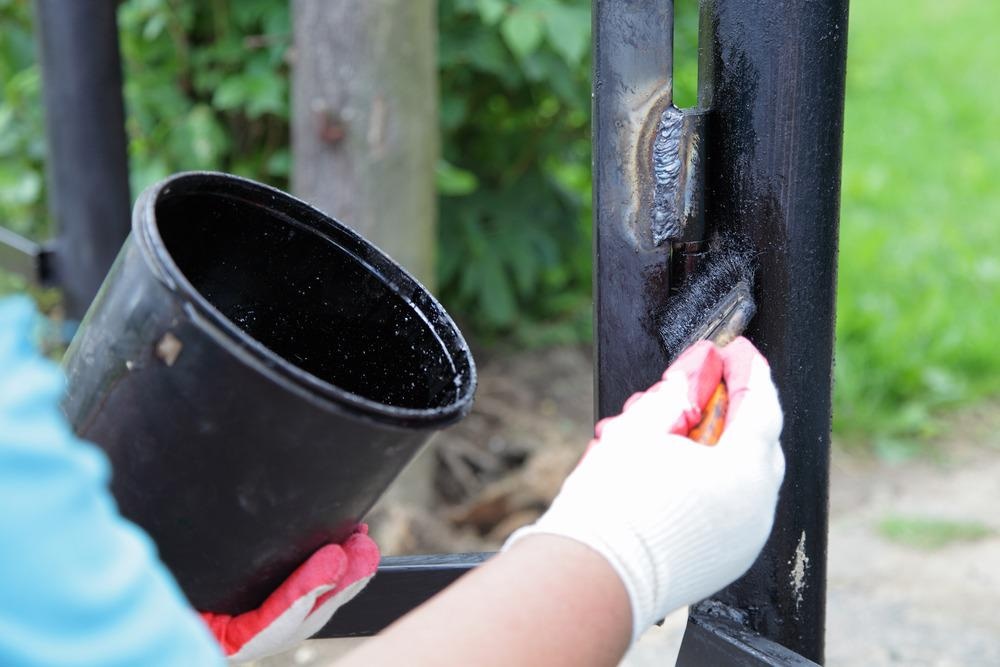A recent study published in the journal Colloids and Surfaces A: Physicochemical and Engineering Aspects focuses on developing a new silk fibroin-graphene oxide (SF-GO) nanofiller to enhance anti-corrosion properties of waterborne epoxy coatings.
 Study: A novel silk fibroin-graphene oxide hybrid for reinforcing corrosion protection performance of waterborne epoxy coating. Image Credits: ilmarinfoto/ Shutterstock.com
Study: A novel silk fibroin-graphene oxide hybrid for reinforcing corrosion protection performance of waterborne epoxy coating. Image Credits: ilmarinfoto/ Shutterstock.com
To maximize the anti-corrosion performance of epoxy coatings, it is vital that nanoparticles and epoxy spread evenly and interact properly on the coating's surface. Due to the outstanding dispersal of SF-GO nanostructure with waterborne epoxy matrix, waterborne epoxies treated with 0.5 percent SF-GO demonstrate good barrier and anti-corrosion properties.
Metal Corrosion and Issues with Traditional Epoxy Coatings
Corrosion of metals is a widespread issue in the manufacturing industry, resulting in significant financial losses and affecting the secure operation of the equipment. As a result, various mitigation and prevention strategies have been developed to prevent metal corrosion. Among these, traditional epoxy coating is one of the most efficient and cost-effective ways.
Conventional epoxy coatings are largely solvent-based, resulting in elevated amounts of volatile organic compounds (VOCs), which are harmful to the environment and human health. As a consequence, environmentally safe waterborne epoxy coatings have surpassed solvent-based epoxy coatings in popularity. Nevertheless, waterborne epoxy coatings are prone to acquire a substantial percentage of tiny holes and defects during the curing process, significantly compromising the coating system's anti-corrosion performance.
Importance of Graphene Oxide
Graphene oxide is an ideal (2D) substance that has generated considerable attention in the area of corrosion protection due to its remarkable barrier properties. Contrary to graphene, graphene oxide's non-conductive behavior can also inhibit the development of micro-galvanic degradation. In comparison to the CVD formation of graphene oxide on metallic surfaces, mixing graphene oxide particles with natural polymers to form organic coatings is a more straightforward and effective anti-corrosion approach.
Graphene Oxide Dispersion Problem in Waterborne Epoxy Coatings
Due to its large contact area and high van der Waals interactions, graphene oxide (GO) is hard to break down and disperse throughout the waterborne polymeric matrix, severely restricting its application in waterborne epoxy composite material. Consequently, optimizing both dispersal and interfacial interaction of GO and the epoxy matrix is vital for increasing the corrosion resistance of the GO-based composite WEC.
Importance of Silk Fibroin
Due to its outstanding biological and mechanical characteristics, silk fibroin (SF), a fibroin generated from organic silkworm sacs, has been extensively employed in biomedicine and hydrocolloids. Epoxy coatings are more durable because of the physiochemical crosslinking of silk fibroin and epoxy resins; therefore, SF fibers may be an appropriate natural material for enhancing the compatibility of synthetic nanoparticles and epoxy coatings.
Research Methods
In this study, the researchers examined the anti-corrosion capabilities of the SF/GO hybrid for waterborne epoxy coatings. A 100 mg GO suspension (25 mL of produced GO particles) was spread in a 2% silk fibroin solution, and ammonium hydroxide was injected drop by drop into the solution to achieve a pH of 10. After one day of agitation at ambient temperature, the solution was used to graft silk fibroin onto the interface of graphene oxide. Following that, 20 g of waterborne epoxies were added to the SF-GO mixture and rapidly shaken for twenty minutes to completely disperse the nanoparticles and epoxy resins.
Research Findings
The researchers discovered that the novel SF-GO hybrid material exhibits exceptional solubility and degradability in waterborne epoxies, enabling GO nanosheets to effectively exert their physical barrier properties against air corrosion. Additionally, the DSC results showed that silk fibroin might enhance the uniformity of the epoxy adhesive for the SF-GO/epoxy composite resin, which benefits the coating's corrosion barrier function.
EIS tests and salt spray experiments determined the freshly prepared composite's barrier and anti-corrosion properties, showing that the composite covered with 0.5% SF-GO had the best anti-corrosion capability, with a resistance significantly larger than the natural epoxy matrix. Additionally, the salt spray test findings showed that the 0.5% SF-GO/WEC exhibit great long-term corrosion protection, which corroborated the EIS test results.
This work demonstrates that the superior dispersal and solubility of SF-GO/WEC, as well as the physiochemical interrelation between the silk fibroin and the epoxies, contribute to the SF-GO/WEC's improved shielding capability and anti-corrosion properties.
Continue reading: Graphene Used as an Additive in Polymer Applications.
Reference
Li, Z. et al. (2021). A novel silk fibroin-graphene oxide hybrid for reinforcing corrosion protection performance of waterborne epoxy coating. Colloids and Surfaces A: Physicochemical and Engineering Aspects. Available at: https://www.sciencedirect.com/science/article/pii/S0927775721018288?via%3Dihub
Disclaimer: The views expressed here are those of the author expressed in their private capacity and do not necessarily represent the views of AZoM.com Limited T/A AZoNetwork the owner and operator of this website. This disclaimer forms part of the Terms and conditions of use of this website.